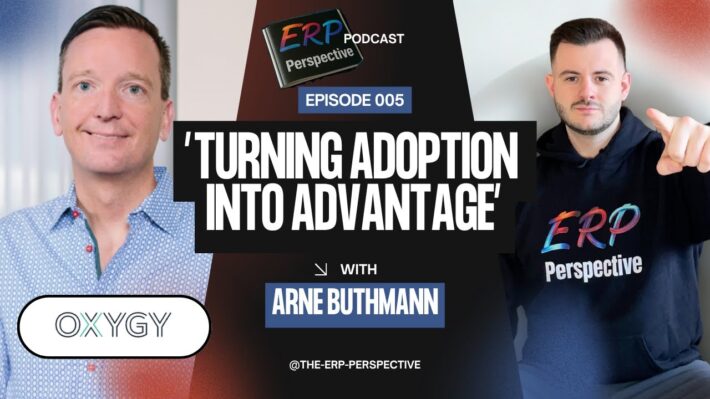Mergers and Acquisitions come in many sizes and types. This makes describing “how we would do it” very difficult – it really does depend on the unique situation. But there are some ways of approaching and executing the Post Merger Integration (hereafter “PMI”) that are universal to all situations.
Many acquisitions are simple commercial and financial transactions – effectively a change of ownership, adding a new company into a conglomerate. But some are at the other end of the spectrum – a industry consolidation where the customers, products and employees of the two companies are brought together and integrated to create a new whole that needs to be more than the sum of the two parts.
The closer a transaction gets to this second end of the spectrum, the more complex the PMI work becomes. It isn’t complicated – it is not a tangled web of priorities and problems that can never be unpicked successfully – but it is complex: a number of critical challenges that impact each other and need a holistic approach to manage successfully.
There are two simple models that can be used to illustrate this complexity. The first is to look at the PMI as having three aspects – Physical Integration, Organizational Integration and Emotional Integration.
- Physical Integration is about resolving the assets and mechanisms of the company – the customers, the products, the sites, the supply chains, the legal entities, the processes, systems, the accounts.
- Organizational is about resolving the structure and staffing – if you bring together two companies then you will have two of everything, both central functions and out in the markets (for example each market may now have two sales offices and sales forces). It is inevitable that a significant part of the savings in the business case for the deal rests on resolving this.
- The hardest is Emotional – each merging company will have staff who are familiar with that company and its culture, and who will probably show a (sometimes unexpected) loyalty to the old company, what it does and stands for, and how it did things and will resist the change. The new combined company will need its own culture and loyalties – perhaps those inherited from one of the two, or perhaps created afresh. At the same time, each individual will be faced with a threat (whether perceived or real) to their future.
The second model that can help understand the complexity looks at things from the point of view of the company’s stakeholders. We can start by looking through the eyes of three of the six stakeholders – customers, of employees and of the owners.
- When two companies with shared customers merge, the customers are (quite reasonably) expecting to benefit. Your integration can make their life easier. One portfolio of products to choose from, not two, place one order, receive one delivery, one invoice, make one payment. Trade terms at least as good (preferably better than) those offered before. This has been called “One Face to the Customer”.
- Employees want to know whether they have a job, what it is, what is expected of them, whether they can be successful and secure in the new role. Ambitious employees will want to maximize the opportunity for promotion. Others will see this as an opportunity to get paid off and move on (to early retirement or to new work). The phrase “what’s in it for me” is often applied here, but it is misleading – it implies a degree of greed, where for most people what they want is clarity and certainty and to be treated fairly and with respect.
- And finally, Owners have clear and unambiguous needs. Whether they are shareholders or private owners, they have put their money at risk when they agreed this deal, and they want to see it done properly and the risks addressed. They want the finances and accounting of the new company secured, the savings realized, the benefits enabled and start to be delivered. They want any risks and potential liabilities mitigated or neutralized.
This model also helps to discuss priorities when resources are constrained – which is more important – “One Face to the Customer” or the new Chart of Accounts for the Owners?
So, what does this complexity mean? How can we work to complete the integration?
A PMI is a serious project whose success or failure will determine the future of the new company. It therefore needs:
- Active, visible and explicit sponsorship from the CEO (supported by their Executive). As the integration will affect the whole company, only sponsorship at this level will be effective.
- The appointment of an overall project leader, and their immediate team, who can embrace the complexity described above and help both the wider project teams and the leaders of the business to understand what needs to be done and how to do it. This requires a number of “generalists” to be found – people who ho ideally have been with the acquiring company long enough to have established a trusted network and reputation for fairness, have worked in multiple functions and have a good overview of how things get done.
- The resources needed by the PMI project to be made available – there are three types of resource: people (with the right skills, experience and time for the project), money, and decisions (by the CEO and Executive Committee). A good PMI project leader will understand that the new business also has to keep trading successfully and will only ask for resources that are absolutely needed.
More than most types of project, a PMI will run into issues and surprises. Due Diligence can never uncover all the facts about a company, projections for benefits and for synergies were based on assumptions which may not survive an encounter with reality, timelines for integration proposed at the start were probably optimistic but now need to be realistic and credible if people are to commit to them.
The CEO and the Executive therefore need to understand that the project leader will inevitably come to them with unwelcome news – an unexpected issue, disappointing forecasts for benefits and savings, warnings of delays. But a competent project leader will also come with proposed solutions and commitments. They should have worked with the team to offer the best, most feasible, recommendations. If they do not do this, then they are not a competent PMI project leader.
In all of this, the key to success is people – how the project and team are established and managed, and how the wider organization is led. These interact with each other – the project needs to help and support the leaders to enable them to lead their staff well, and conversely the project needs to be supported to allow those staff assigned to it to keep their focus and motivation. A typical fear is that by the time a project member is released from the project, all the jobs in the new organization will have been filled and they will be left with no job to go to (or a poor offer that if they decline they will be considered to have resigned). Transparency, collaboration and agreeing on how people involved will be managed during and after the project is closed is essential.
One specific way the project needs to help the leaders is to ensure they understand what is non-negotiable. “Internal” projects have much scope for negotiation, and skill in playing company politics is frequently used (but not always wisely). PMI projects will have this too but will also have non-negotiable imperatives coming from outside. These can come from clauses in the deal agreement which make specific commitments, from commitments made to address regulatory concerns and therefore gain approval, from legislation such as employment law, and from commitments and forecasts made to financial markets. Such things are not unknown in day-to-day business, but a PMI will probably have more of them together at the same time than people are used to.
A real, unusual and humorous example is when a company had to divest a brand in order to get regulatory approval for an acquisition. The only bidder was difficult to work with and insisted on certain conditions. One was that ALL reference to the brand had to be removed by the seller on the day of closure of the deal – marketing and sales materials, samples and promotional materials, files on computers – and the decoration of the branded meeting rooms at the company offices. Explaining to the (always overstretched) facilities managers that certain rooms had to be stripped to a tight deadline was a challenging conversation!
Another way the project can help is by keeping a calm, neutral and supportive approach. Both leaders and staff will be stressed (see the “emotional Integration” above) but will need to address tough problems. The project team members who are working with staff, and facilitating key meetings, must have the skill and experience to deal with the situations they find themselves in …
During a merger, the consolidation of the supply chains for each of the two companies was a priority needed to achieve “One Face to the Customer”. Each company had its own supply chain organization in a Region. It was necessary to decide what must be done before the organization was finalized and a new leader and staff appointed (as part of the “Organizational Integration”). The project had to facilitate a meeting with both the current leaders together with the staff of each, to make a plan. Everyone in the room knew that they would soon be competing with each other for jobs in the new organization and could easily have tried to play politics to gain an advantage or to be stubborn and withhold contributions to the topic. But by setting up the meeting properly, and with good facilitation a successful and constructive meeting was held.
The project will need to expose and resolve competing priorities – for example where Finance are pressing to secure savings through headcount reductions, but effort and expertise is still needed for integration. An example would be pressure to reduce the headcount in the IT department despite the amount of systems work still to be completed.
None of the above is particularly complicated, but the number of interacting aspects makes it complex. However, despite this, success can be secured by …
- Understanding where the integration lies on the spectrum of change of ownership to full merger
- Appointing a suitably skilled and experienced Project Leader and immediate team
- Using simple models (such as the two above) to understand the priorities and challenges to be addressed
- Establishing trust and a constructive dialogue between the CEO+Executive and the project so that necessary resources are made available and issues (with benefits, with savings, with timescale) can be addressed quickly and pragmatically
- Through the Executive, and with the support of the project, engaging the leadership and helping them to guide their staff through the transition without losing focus on customers and business, ensuring they are treated with fairness and respect and so those leaving will uphold the reputation of the company and those staying can apply themselves to the new challenges with energy and without “survivor guilt”.
About the Authors
Andrew MacNeil is a Director at OXYGY. Most frequently he acts as a coach and facilitator and as an expert in business change to help clients in areas from Marketing to Operations, on challenges with strategy, innovation and organizational change.
Steve Crom is Chairman and Partner at OXYGY. For 35 years, he has supported leaders and organizations in achieving sustainable breakthroughs in performance.






